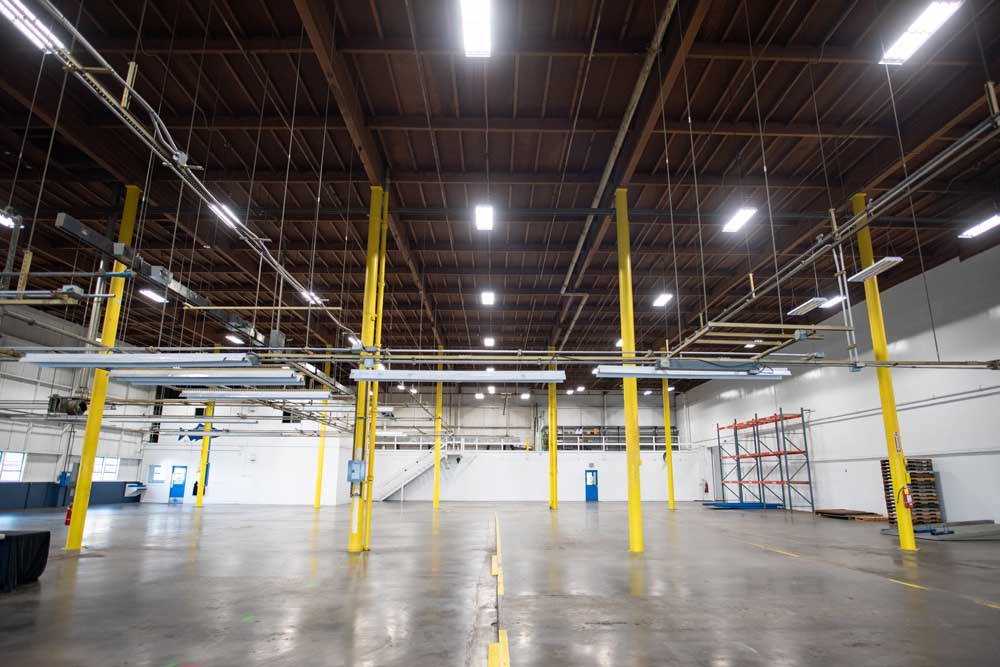Breweries, Astoria partner on wastewater solutions
Published 1:15 pm Tuesday, October 27, 2020

- Fort George Brewery received $1 million from the state to clean up petroleum contamination beneath Astoria Warehousing.
The Astoria City Council on Monday signaled support for a phased approach to improve treatment of industrial wastewater coming primarily from Fort George Brewery and Buoy Beer Co. after a consultant presented a plan to divert brewery waste.
Fort George and Buoy Beer have created hundreds of jobs, renovated run-down commercial properties and boosted the region’s economic fortunes. But the breweries are also taxing the city’s ability to pump out treated wastewater into the Columbia River clean enough for federal standards.
Astoria’s sewage lagoons, built in 1974, have never been cleaned of accumulated grit. They still meet the city’s minimal population growth trends but were never designed to treat spent yeast, hops and other ingredients in brewery runoff.
Mayor Bruce Jones said finding a solution isn’t about blaming anyone, including breweries, which he called critically important to the local economy.
“It’s certainly not about pointing fingers,” the mayor said. “It is what it is. It’s where we are right now. It’s the current status of the infrastructure and developing industries in our community.”
City staff have recommended a $5 million project in the next five years to significantly expand the treatment system’s capacity by turning a lagoon into a sludge storage pond and installing a new headworks to filter out grit and other solids. The hope is to stave off the need for a newer, mechanically driven plant estimated at anywhere between $40 million and $60 million.
With Fort George and Buoy Beer both headed toward significant expansions, the city is also creating an industrial pretreatment program to limit solids. Some in the beer world fear the new regulations and wastewater fees could make further expansion in Astoria too costly.
Fort George and Buoy Beer jointly hired John Mercer, a brewery wastewater consultant, to improve treatment. Mercer presented a side-streaming plan for Fort George’s new brewery at Astoria Warehousing to divert some of the heaviest effluent into tanks that would be taken to local farms for supplemental cattle feed.
Buoy Beer plans to install a similar system. The breweries expect the side-streaming to come online next year and reduce the current output of solids by about two-thirds, even after expansion.
“This is big for even a bigger brewery,” Mercer said of the side-streaming systems. “So the breweries really recognize the limitations that the city has.”
New investments
Fort George has invested in Astoria Warehousing, a former canning and labeling complex where the brewery is building an expanded brewhouse, canning line, cold storage, distribution center and pub.
Buoy Beer is also looking to expand.
Chris Nemlowill, the co-owner of Fort George, shared his concerns with the proposed industrial pretreatment program. He said breweries and the city need more time to collect data on brewery runoff and find innovative ways to reduce the impact, even with cash flows decimated by the loss of business because of the coronavirus pandemic.
“Fort George alone is going to be spending upwards of $300,000 that we had not planned on in our project at all on this system,” Nemlowill said of side-streaming. “And I imagine Buoy Beer is going to be spending a comparable amount, if not even maybe more, because they’re out over the water trying to implement this.”
City staff proposed allocating a certain amount of the treatment capacity over the next five years for breweries, whose side-streaming of heavier waste will hopefully buy more time to look at innovative solutions, said Cindy Moore, assistant city engineer. The plan assumes the city would also figure out how to fund the $5 million expansion in the next five years, by which point breweries could be bumping up against their maximum wastewater treatment allocation.
“We feel comfortable moving forward with this strategy, because there is going to be an immediate improvement as soon as the side-streaming is implemented,” Moore said. “It does give us the opportunity, as we mentioned, to get more data. So, as your public works staff, this would be a way to support the industries and still protect the public infrastructure.”
Fast-tracking permits
The city is designing an industrial pretreatment program and figuring out how to charge different commercial users with varying strength and volumes of wastewater. City staff plan on fast-tracking permits before the program for Fort George and Buoy Beer to keep up with their expansions.
Fort George’s permit will come before the City Council for approval next month. The City Council’s approval would allow Fort George to exceed a previously agreed-upon level of solids in its wastewater and keep on a timeline to make beer at Astoria Warehousing by the end of the year, City Manager Brett Estes said.




